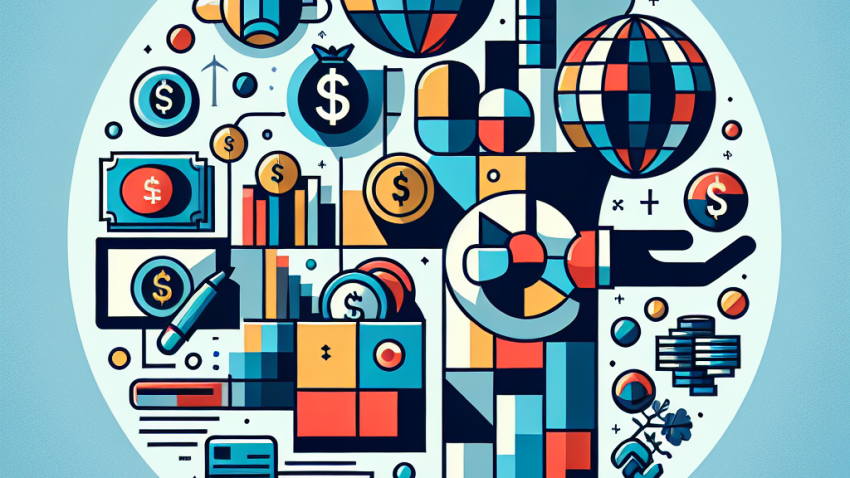
How Far Can Monetary Policy Go Without Government Support?
The Hegemony of the Dollar: Can the Greenback Maintain Its Global Dominance?
When the Bretton Woods system was conceived in a quaint New Hampshire hotel in 1944, few could have predicted just how omnipotent the US dollar would become. Fast-forward nearly eight decades, and the dollar is no longer just King—it rules with imperial overconfidence.
But as empires do, questions are rising whether the greenback’s global reign is durable, or if the world is preparing for a new monetary order. As a professor of international finance for more decades than I care to admit (and an aficionado of well-aged Scotch and central bank minutes), allow me to take you through an analytical yet accessible journey into the dollar’s current throne and its potential challengers.
The Dollar’s Formidable Foundations
To comprehend the dollar’s stickiness on the global scale, one must dissect not just economic function but geopolitical gravity. The dollar is not dominant simply out of tradition—it is engineered into the gears of the global economy. Here’s why:
1. Reserve Currency Status
Roughly 60% of global foreign exchange reserves are still held in USD, according to the IMF’s COFER database. Central banks around the world hold dollars as a hedge, a buffer, and in many cases, as a de facto global account balance.
2. Petro-dollar System
Oil—black gold—is still priced overwhelmingly in dollars. That means even if Bahrain wants to sell crude to Beijing, they’re doing the bookkeeping in Washington’s currency.
3. SWIFT and Dollar Payments Network
The majority of international payments continue to route through the SWIFT network, with an estimated 42% of global transactions executed in dollars. Combine that with American influence over sanctions, particularly financial ones, and few dare to challenge the system—at least openly.
The Rising Tide: Potential Contenders to Dollar Dominance
No great monarch rules unchallenged forever. Several currencies and technological frameworks are preparing their lances, each aiming, in their own way, to take a stab at dethroning the dollar.
1. The Euro: Sophisticated but Fragmented
In theory, the euro has the elegance and economic mass to challenge the dollar. The eurozone boasts a GDP of around $15 trillion, comparable to the United States. However, the euro is consistently hampered by:
- Political fragmentation among member states
- A central bank with limited consensus between fiscal doves and hawks
- Structural limitations such as the lack of a unified bond market akin to US Treasuries
As an academic who has published extensively on European monetary policy, I must say—until the euro currency union becomes a true fiscal union, its potential will remain largely romantic.
2. China’s Yuan: The Aspiring Challenger
China has made remarkable strides in internationalizing the yuan or renminbi (RMB). From launching the Cross-Border Interbank Payment System (CIPS) to bilateral trade agreements that bypass the dollar, China is playing the long game. However, key issues persist:
- Capital controls prevent full convertibility of the yuan.
- Lack of trust in China’s legal and regulatory infrastructure.
- Geopolitical risks that deter western institutions from major yuan exposure.
Unless Beijing is willing to liberalize its capital account (and I wouldn’t hold my breath), the yuan’s chances at global primacy remain more aspirational than imminent.
3. Cryptocurrencies and CBDCs
Ah yes, digital currencies—the enfant terrible of global finance. With the rise of Bitcoin, Ethereum, and Central Bank Digital Currencies (CBDCs), monetary orthodoxy faces disruption. Yet their role in dethroning the dollar is premature speculation.
CBDCs might strengthen national currencies, but they’re unlikely to foster a single dominant currency. Bitcoin’s volatility and deflationary nature make it unsuitable for global reserve use. That said, they may nibble at the infrastructural edges of dollar hegemony.
Challenges to Dollar Dominance from Within
Ironically, threats to the dollar’s dominance may stem not from without, but from within. Here are the key internal risks:
1. Weaponization of the Dollar
Geopolitical overreach—such as freezing sovereign assets or leveraging the dollar payments network for sanctions—might prompt other nations to de-dollarize to preserve autonomy.
2. Unsustainable Fiscal Policy
America’s sovereign debt has surpassed $33 trillion (and counting). While bond markets show faith in Treasuries today, long-term debt accumulation without commensurate growth or reform could sow seeds of distrust.
3. Political Instability
Polarization and brinkmanship in US politics—debt ceiling standoffs, government shutdowns, etc.—erode institutional credibility. Reserve currency status depends on trust, not just spreadsheets.
Scenarios: What Could Replace the Dollar?
As an Oxford man, I appreciate probabilities over hyperbole. So here are some plausible future scenarios:
- Multipolar Currency World: Diverse regions adopt different reserve currencies—euro for Europe and Africa, yuan for Asia, dollar for the Americas.
- Digital IMF SDR 2.0: The Special Drawing Rights of the IMF, currently a basket asset, could become a programmable digital reserve unit backed by multiple economies.
- Status Quo Reinvented: The dollar remains dominant, but with digital enhancements to keep up with fintech evolution.
The Dollar’s Crown: Wobbly or Welded?
So, to the million-dollar—or shall I say, multi-trillion-dollar—question: is the dollar’s reign ending?
My answer, based on decades of monetary policy analysis, is a restrained no. The USD may no longer be unchallenged, but it remains indispensable. No rival yet offers the trust, liquidity, legal security, and global network to match its heft.
And this isn’t just about economics—it’s about stability. In times of crisis, be it a pandemic, a war, or a financial meltdown, global investors still rush into Treasuries and dollar-denominated assets. That tells you everything about perceived safety.
Conclusion: Embracing the Complexity
The narrative that “the dollar is dying” makes for good headlines but poor policy thinking. We must distinguish between erosion of dominance and total displacement. The world may become more currency-diverse, but even in a multipolar reality, the dollar will likely remain—adapted, perhaps, digital, certainly, but not dethroned.
For investors, policymakers, and market observers, the task isn’t to bet against the dollar but to monitor the silent structural shifts that may gradually redefine its utility and role. That’s the kind of nuanced thinking befitting this dynamic financial era—and yes, it’s the sort of analysis that pairs best with a neat 18-year-old Glenlivet and a fresh spreadsheet of cross-border capital flows.
Learn more about our mission at Financeone’s About Us page or get in touch for detailed inquiries.









Leave a Reply